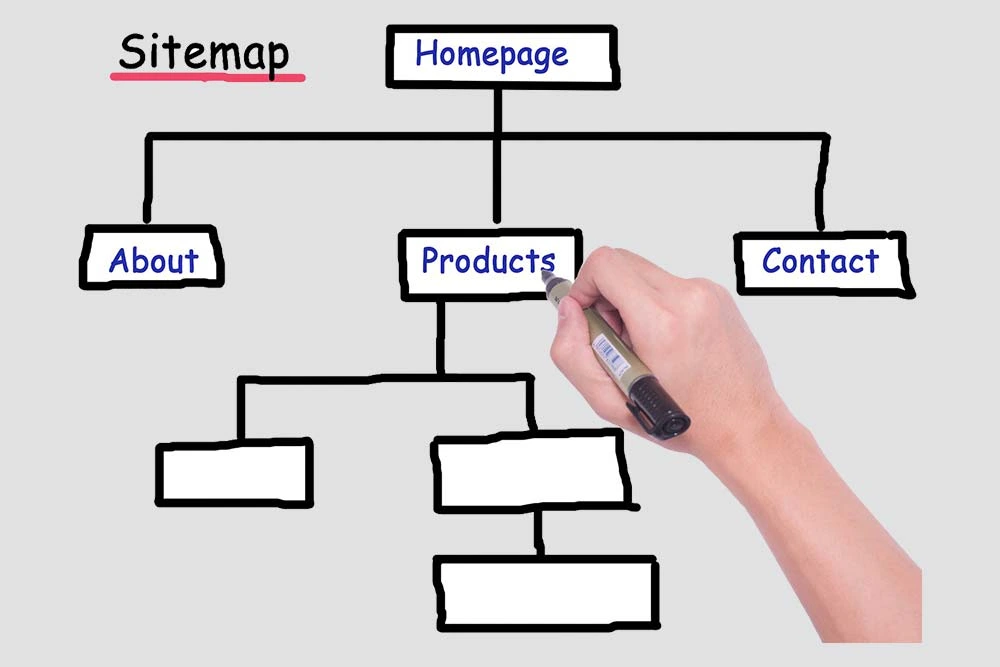
A sitemap, as the name implies, is a map of your site. In particular, a sitemap is a file (usually in a format known as xml) that provides a “road map” of URLs (links) to all of the pages, videos, images and other files within a website and helps to show their relationship to one another.
There are 2 Types of Sitemaps
XML Sitemap
An XML sitemap is one that is based on the Extensible Markup Language (XML) which via the use of “tags” enables you to define, store and transport data online. Although humans can read the data stored in an XML sitemap, it is mainly intended to be read and shared between software applications, such as Googlebot.
HTML Sitemap
An HTML sitemap is primarily used to be viewed by humans via a web browser, to show the pages within a website and links to access them. Googlebot and other crawlers can also read and follow links in an HTML sitemap. That said, HTML sitemaps are far less commonly used these days.
An XML sitemap is a document that assists search engines in the discovery of all important pages within a website through the presentation of page URLs and the date each page was last modified (updated).
What is the Purpose of an XML Sitemap?

The main purpose of an XML sitemap is to assist Google and other search engines to more efficiently crawl your website to find URLs to pages or content that you feel are important. This in turn enables search engines such as Google to better understand what your website is about and other important information such as how when and how often a website is updated.
Keep in mind that having an XML sitemap is not a guarantee that all pages and content within your website will be found and indexed by Google or any other search engines.
Benefits of an XML Sitemap
There are a number of benefits resulting from the implementation of an XML sitemap. Perhaps among the most important advantage, from a Search Engine Optimization (SEO) standpoint, is that an XML sitemap enables Google and other search engines, to crawl your web pages of content more promptly when new content is published. That’s because when the last modified dates in the XML sitemap are updated, it lets search engines like Google know that there is new content to crawl and index. Thus, use of an XML sitemap when you add fresh content to your website pages can help to improve your organic search rankings since Google can be alerted via a “ping” whenever your web page content has been updated or changed.
Other Benefits of an XML Sitemap:
Effective Way to Get All of Your Web Pages Found and Crawled.
Without an XML sitemap, some of your web pages may never get found by Google and other search engines. An XML sitemap makes it easy for all of your web pages to be crawled and indexed by Google and other search engines.
Content Prioritization.
An XML sitemap enables you to prioritize the importance of some web page content over others. This enables Google and other search engines to determine which pages should be crawled and indexed first.
Should I use an XML Sitemap?

Yes! Anything that can help your website to get crawled, indexed and ranked better organically, with minimal effort on your part, is certainly worth doing.
Keep in mind that when a website has pages linked via a global menu/navigation and or interlinks throughout its pages, search engines, including Google, should be able to find most, if not all, of your website’s pages.
However, we still recommend that all websites implement an XML sitemap because it makes it easier for search engine “crawlers” such as Googlebot, to efficiently find your web pages via a list of URLs and other information such as last modified dates, URL priority and change frequency.
Thus, an XML sitemap should enhance a website’s ability to be more comprehensively crawled by the search engines, which is a good thing if you care about SEO and search engine visibility.
How to Create an XML Sitemap
If you are using a WordPress website, you have many choices of plugins that make creating XML sitemaps a matter of simply installing and activating a plugin. There are a number of highly rated, standalone, XML Sitemap plugins such as Google XML Sitemaps by Arne Brachhold and XML Sitemaps by Denis de Bernardy & Mike Koepke.
Alternatively, many popular SEO plugins such as Yoast SEO by Team Yoast and All in One SEO Pack by Michael Torbert, already include XML Sitemap support.
If you are using a static HTML website, you can use some free online XML sitemap generators such as XML-sitemaps.com